The 10 Coolest New Smartphones Of 2019 (So Far)
Major new smartphone releases for this year so far have included Samsung's Galaxy S10 and Google's Pixel 3a.

Top Smartphones
While iPhone fans didn't see any expansion of their choices during the first half of 2019, Android smartphone users have seen many new options come to market. Samsung alone released four new premium Galaxy phones in the initial months of the year (not even counting the company's foldable device, the Galaxy Fold, which has yet to make it out of the gate). Meanwhile, Google, LG, Motorola, OnePlus and Sony were among the other Android smartphone makers to launch notable new devices during the first half of the year. Support for high-speed 5G was a major theme—with three of the smartphones on our list offering 5G capabilities, where available—while other key features for many of the new phones included enhanced displays, upgraded cameras and in-display fingerprint sensors.
In the following slides we've rounded up our picks for the 10 coolest new smartphones of 2019 so far.

Google Pixel 3a
Amid rising prices for premium smartphones, Google announced the launch of new Pixel-branded smartphones in May that feature a lower price tag (starting at $399). Google launched the Pixel 3a with two display sizes, 5.6 inches and 6 inches, both of them with OLED display technology and available in three colors (black, white and "purple-ish"). The company is claiming up to 30 hours of battery life on a charge for the Pixel 3a, thanks to a battery optimization driven by machine learning. The phones also come with many of the key features of the higher-end Pixel 3 devices, including camera capabilities such as Night Sight, Portrait Mode and Super Res Zoom; Call Screen (which automatically transcribes calls from unknown callers); and the ability to trigger the Google Assistant by squeezing the sides of the device. Notably, the Pixel 3a includes a 3.5mm headphone jack, which is omitted from the Pixel 3.

LG G8 ThinQ
During the first half of the year, LG debuted its newest flagship, the G8 ThinQ, which stands out with some quirky features. The 6.1-inch smartphone includes a feature that LG is calling "Air Motion" commands, which lets you wave your hand to perform functions such as answering calls, increasing the volume and snoozing an alarm. Users can also log in using a scan of their palm as a new form of biometric authentication. Additionally, LG says the display on the G8 ThinQ is actually also the phone's speaker, which the company says helps to provide clearer, more-immersive sound. The LG G8 ThinQ is powered by the Qualcomm Snapdragon 855 processor and features an OLED display with QHD+ (3,120 x 1,440) resolution.
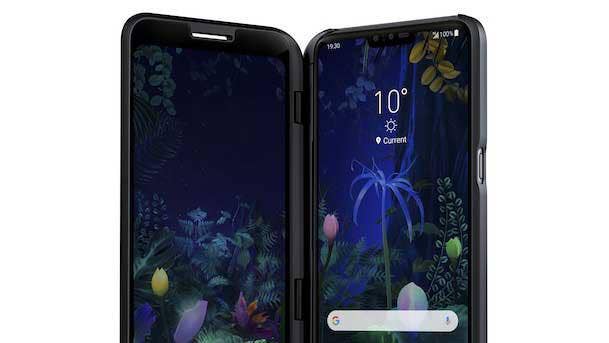
LG V50 ThinQ
LG is looking to capitalize on the move to 5G, with the launch of the 5G-capable V50 ThinQ. The V50 ThinQ serves as an update to last fall's LG V40, offering a 6.4-inch OLED display and three rear cameras. Along with adding support for 5G, the V50 ThinQ also introduces a "Dual Screen" accessory, providing an alternative to promised foldable smartphones from Samsung and Huawei. The accessory is a 6.2-inch OLED display that can attach to the V50 ThinQ for using multiple applications at once. Like the G8 ThinQ, the V50 ThinQ offers strong horsepower with Qualcomm's Snapdragon 855 processor and also includes a large 4,000 mAh battery for accommodating the demands of 5G applications.
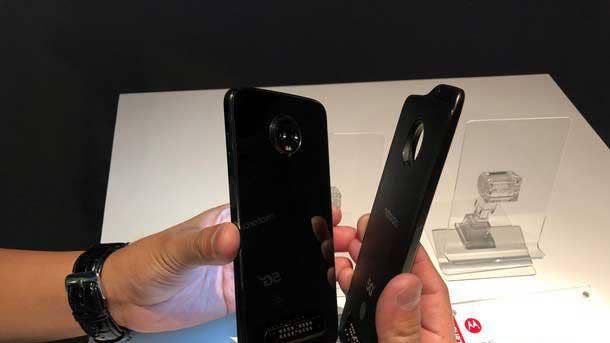
Motorola Moto Z3 5G
Speaking of 5G, Motorola launched a 5G-capable phone of its own during the first half of the year—through the addition of a 5G modular add-on to the previously available Moto Z3 smartphone (only available with Verizon). The 5G Moto Mod is sold separately for a retail price of $349.99. The mod snaps onto the back of the Moto Z3, and includes Qualcomm's Snapdragon X50 5G modem along with dedicated antennas for accessing Verizon's ultra-wideband network. The mod also includes a 2,000 mAh battery to prevent battery drain from faster data speeds. As for the Moto Z3 itself, the 6-inch smartphone features an FHD+ Super AMOLED display, a 3,000 mAh battery and Qualcomm's Snapdragon 835 processor.
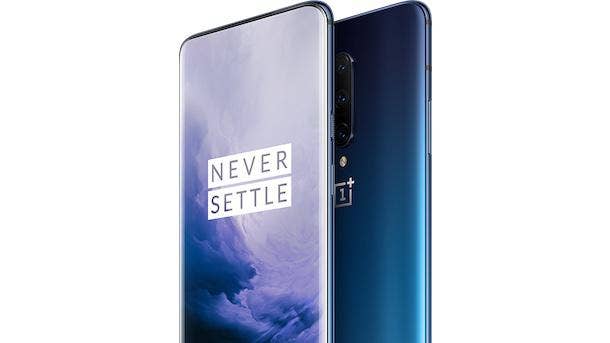
OnePlus 7 Pro
The latest flagship from OnePlus includes a number of upgrades over previous models. The OnePlus 7 Pro features a large, 6.67-inch "Fluid AMOLED" display with a 90 Hz refresh rate, which aims to provide a smoother display appearance. The smartphone also offers slim bezels around the QHD+ display, and the screen curves around the edges of the phone, as well. Meanwhile, the OnePlus 7 Pro comes with three cameras (including a 48-megapixel main camera); fast-charging capabilities for its 4,000 mAh battery; dual stereo speakers with Dolby Atmos technology; the Snapdragon 855 processor and up to 12 GB of RAM; and an in-display fingerprint sensor.
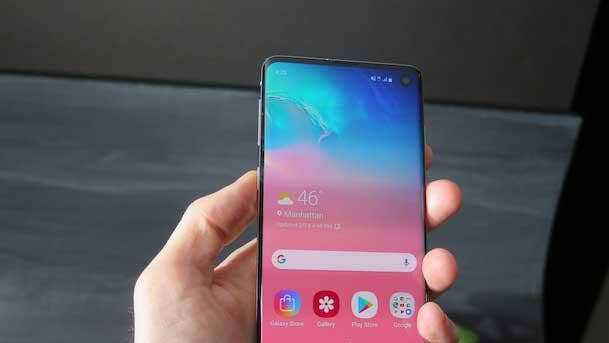
Samsung Galaxy S10
Samsung introduced a number of new features with the launch of the Galaxy S10 this year. The device adds a new camera sensor—a 16-megapixel "ultra-wide" lens for capturing large scenes, offering a 120-degree field of view. The Galaxy S10 also introduced an "ultrasonic" in-display fingerprint scanner for less-obtrusive log-in; the scanner just appears on the unlock screen to show users where to place their finger, and then disappears afterwards. Another key new feature of the Galaxy S10 is Wireless PowerShare, which offers the ability to wirelessly charge other Qi devices by placing them on the back of the S10. For the display, the Galaxy S10 features a 6.1-inch AMOLED screen and QHD+ resolution, with a "hole punch" design front camera in the upper righthand corner. In terms of other specs, the S10 includes a total of three rear cameras along with a 3,400 mAh battery, 8 GB of RAM, the Snapdragon 855 processor and up to 512 GB of internal storage.
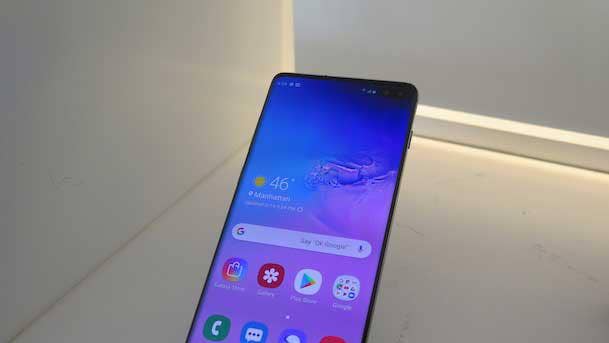
Samsung Galaxy S10+
With the Galaxy S10+, Samsung keeps all of the key features of the S10 model but bumps up many of the specs. The most notable difference is the size of the AMOLED display on the Galaxy S10+, which is 6.4 inches. The Galaxy S10+ shares the same screen resolution as the S10, at QHD+, as well as the triple rear camera system (with ultra-wide lens). But for the battery, the Galaxy S10+ moves up to 4,100 mAh. The S10+ also goes beyond the S10 in terms of RAM and storage options, with an available configuration featuring 12 GB of RAM and 1 TB of internal storage. Meanwhile, the S10+ adds a second front-facing camera—an 8-megapixel depth camera. Like the S10, the Galaxy S10+ is powered by the Snapdragon 855 processor and offers new features such as the ultrasonic fingerprint scanner and Wireless PowerShare.
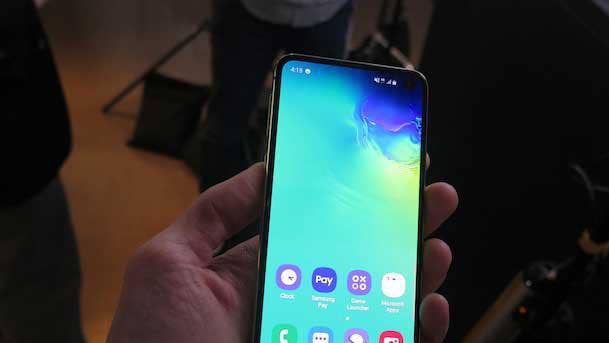
Samsung Galaxy S10e
As the entry-level model in the new Galaxy lineup—and the model primed to compete most closely with Apple's iPhone XR—the Galaxy S10e offers a bit less on specs than the S10 and S10+ models. The Galaxy S10e comes with a 5.8-inch, FHD+ (2,160 x 1,080) display, a dual rear camera and a 3,100 mAh battery. The S10e comes in two variants for RAM and storage configuration—either with 6 GB of RAM and 128 GB storage, or with 8 GB of RAM and 256 GB of storage. A MicroSD slot will enable up to 512 GB of extra storage in the S10e. Notably, the S10e includes a fully flat screen while the S10 and S10+ have curved edges.
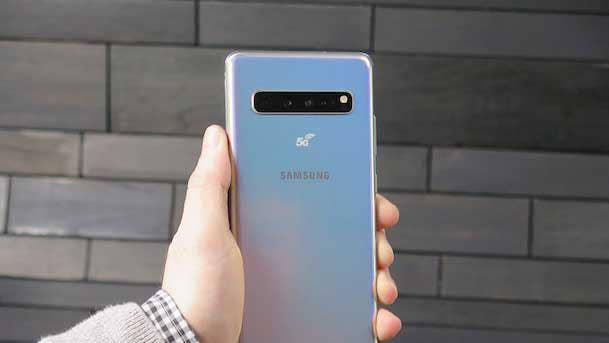
Samsung Galaxy S10 5G
As you'd expect, the Galaxy S10 5G stands out from the other S10 models by offering connectivity to 5G networks as they become available—which promises 20X faster speeds for everything from downloads, to data-intensive and computational-intensive applications, to videoconferencing. The Galaxy S10 5G model also features a larger AMOLED display at 6.7 inches, making it the largest Galaxy smartphone display to date. In addition, the model includes a bigger battery, at 4,500 mAh, and includes a different 3-D depth camera from the other models to help with enhanced augmented-reality capabilities.
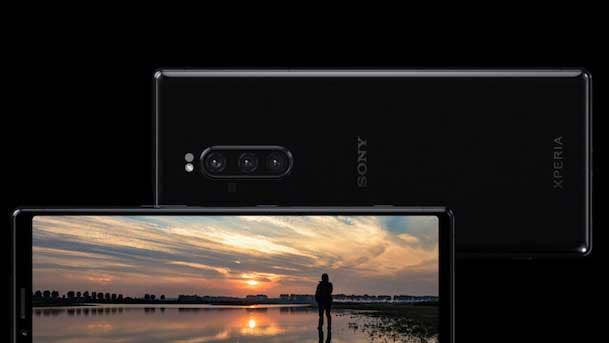
Sony Xperia 1
Sony has taken an unusual design approach with its Xperia 1 smartphone, which was unveiled in February at Mobile World Congress 2019. The Sony Xperia 1 features an ultra-tall display—or ultra-wide if you're holding it horizontally—thanks to a 21:9 aspect ratio for its 6.5-inch display. (That is akin to taking the iPhone XS Max's screen space and stretching it out.) The display itself features 4K resolution and vibrant OLED screen technology, and the display is HDR-capable. Other key features include three rear cameras, a speaker system powered by Dolby Atmos and the Qualcomm Snapdragon 855 processor (the same chip used in the Samsung Galaxy S10 and LG G8 ThinQ).